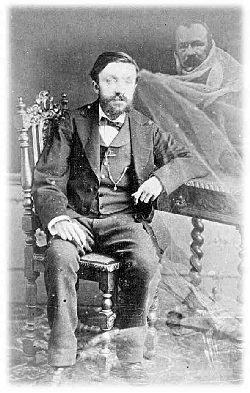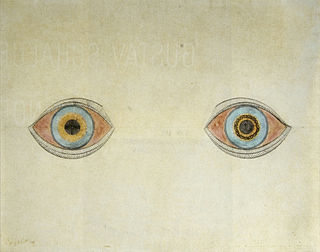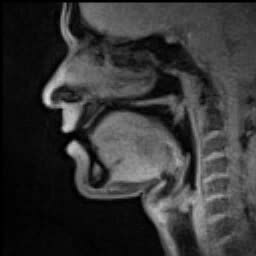
Clairvoyance is the claimed ability to acquire information that would be considered impossible to get through scientifically proven sensations, thus classified as extrasensory perception, or "sixth sense". Any person who is claimed to have such ability is said to be a clairvoyant.
Extrasensory perception (ESP), also known as a sixth sense, or cryptaesthesia, is a claimed paranormal ability pertaining to reception of information not gained through the recognized physical senses, but sensed with the mind. The term was adopted by Duke University botanist J. B. Rhine to denote psychic abilities such as intuition, telepathy, psychometry, clairvoyance, clairaudience, clairsentience, empathy and their trans-temporal operation as precognition or retrocognition.

Parapsychology is the study of alleged psychic phenomena and other paranormal claims, for example, those related to near-death experiences, synchronicity, apparitional experiences, etc. Criticized as being a pseudoscience, the majority of mainstream scientists reject it. Parapsychology has also been criticized by mainstream critics for claims by many of its practitioners that their studies are plausible despite a lack of convincing evidence after more than a century of research for the existence of any psychic phenomena.

Telepathy is the purported vicarious transmission of information from one person's mind to another's without using any known human sensory channels or physical interaction. The term was first coined in 1882 by the classical scholar Frederic W. H. Myers, a founder of the Society for Psychical Research (SPR), and has remained more popular than the earlier expression thought-transference.

A hallucination is a perception in the absence of an external stimulus that has the compelling sense of reality. They are distinguishable from several related phenomena, such as dreaming, which does not involve wakefulness; pseudohallucination, which does not mimic real perception, and is accurately perceived as unreal; illusion, which involves distorted or misinterpreted real perception; and mental imagery, which does not mimic real perception, and is under voluntary control. Hallucinations also differ from "delusional perceptions", in which a correctly sensed and interpreted stimulus is given some additional significance.
An illusion is a distortion of the senses, which can reveal how the mind normally organizes and interprets sensory stimulation. Although illusions distort the human perception of reality, they are generally shared by most people.
This is a glossary of medical terms related to communication disorders which are psychological or medical conditions that could have the potential to affect the ways in which individuals can hear, listen, understand, speak and respond to others.
Auditory illusions are illusions of real sound or outside stimulus. These false perceptions are the equivalent of an optical illusion: the listener hears either sounds which are not present in the stimulus, or sounds that should not be possible given the circumstance on how they were created.

The Silva Method is a self-help and meditation program developed by José Silva. It claims to increase an individual's abilities through relaxation, development of higher brain functions, and psychic abilities such as clairvoyance.

The McGurk effect is a perceptual phenomenon that demonstrates an interaction between hearing and vision in speech perception. The illusion occurs when the auditory component of one sound is paired with the visual component of another sound, leading to the perception of a third sound. The visual information a person gets from seeing a person speak changes the way they hear the sound. If a person is getting poor-quality auditory information but good-quality visual information, they may be more likely to experience the McGurk effect.

Within ghost hunting and parapsychology, electronic voice phenomena (EVP) are sounds found on electronic recordings that are interpreted as spirit voices. Parapsychologist Konstantīns Raudive, who popularized the idea in the 1970s, described EVP as typically brief, usually the length of a word or short phrase.

Subvocalization, or silent speech, is the internal speech typically made when reading; it provides the sound of the word as it is read. This is a natural process when reading, and it helps the mind to access meanings to comprehend and remember what is read, potentially reducing cognitive load.
Auditory imagery is a form of mental imagery that is used to organize and analyze sounds when there is no external auditory stimulus present. This form of imagery is broken up into a couple of auditory modalities such as verbal imagery or musical imagery. This modality of mental imagery differs from other sensory images such as motor imagery or visual imagery. The vividness and detail of auditory imagery can vary from person to person depending on their background and condition of their brain. Through all of the research developed to understand auditory imagery behavioral neuroscientists have found that the auditory images developed in subjects' minds are generated in real time and consist of fairly precise information about quantifiable auditory properties as well as melodic and harmonic relationships. These studies have been able to recently gain confirmation and recognition due to the arrival of Positron emission tomography and fMRI scans that can confirm a physiological and psychological correlation.

The cocktail party effect refers to a phenomenon wherein the brain focuses a person's attention on a particular stimulus, usually auditory. This focus excludes a range of other stimuli from conscious awareness, as when a partygoer follows a single conversation in a noisy room. This ability is widely distributed among humans, with most listeners more or less easily able to portion the totality of sound detected by the ears into distinct streams, and subsequently to decide which streams are most pertinent, excluding all or most others.

Speech is the use of the human voice as a medium for language. Spoken language combines vowel and consonant sounds to form units of meaning like words, which belong to a language's lexicon. There are many different intentional speech acts, such as informing, declaring, asking, persuading, directing; acts may vary in various aspects like enunciation, intonation, loudness, and tempo to convey meaning. Individuals may also unintentionally communicate aspects of their social position through speech, such as sex, age, place of origin, physiological and mental condition, education, and experiences.

A psychic reading is a specific attempt to discern information through the use of heightened perceptive abilities; or natural extensions of the basic human senses of sight, sound, touch, taste and instinct. These natural extensions are claimed to be clairvoyance (vision), clairsentience (feeling), claircognisance and clairaudience (hearing) and the resulting statements made during such an attempt. The term is commonly associated with paranormal-based consultation given for a fee in such settings as over the phone, in a home, or at psychic fairs. Though psychic readings are controversial and a focus of skeptical inquiry, a popular interest in them persists. Extensive experimentation to replicate psychic results in laboratory conditions have failed to find any precognitive phenomena in humans. A cold reading technique allows psychics to produce seemingly specific information about an individual from social cues and broad statements.

In perception and psychophysics, auditory scene analysis (ASA) is a proposed model for the basis of auditory perception. This is understood as the process by which the human auditory system organizes sound into perceptually meaningful elements. The term was coined by psychologist Albert Bregman. The related concept in machine perception is computational auditory scene analysis (CASA), which is closely related to source separation and blind signal separation.
An auditory hallucination, or paracusia, is a form of hallucination that involves perceiving sounds without auditory stimulus. While experiencing an auditory hallucination, the affected person hears a sound or sounds that did not come from the natural environment.

Hearing, or auditory perception, is the ability to perceive sounds through an organ, such as an ear, by detecting vibrations as periodic changes in the pressure of a surrounding medium. The academic field concerned with hearing is auditory science.
Deafness has varying definitions in cultural and medical contexts. In medical contexts, the meaning of deafness is hearing loss that precludes a person from understanding spoken language, an audiological condition. In this context it is written with a lower case d. It later came to be used in a cultural context to refer to those who primarily communicate through sign language regardless of hearing ability, often capitalized as Deaf and referred to as "big D Deaf" in speech and sign. The two definitions overlap but are not identical, as hearing loss includes cases that are not severe enough to impact spoken language comprehension, while cultural Deafness includes hearing people who use sign language, such as children of deaf adults.












